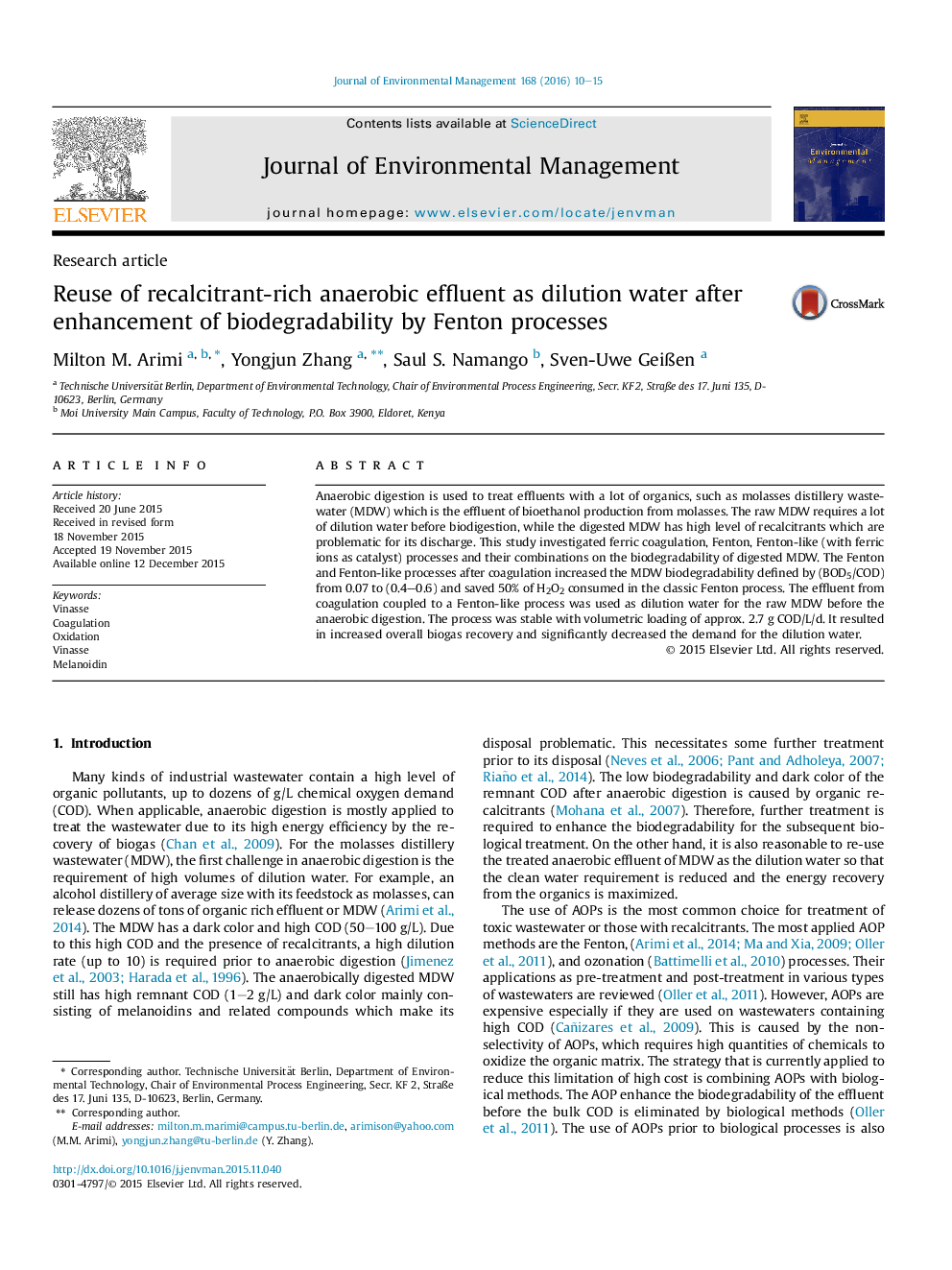| کد مقاله | کد نشریه | سال انتشار | مقاله انگلیسی | نسخه تمام متن |
|---|---|---|---|---|
| 1055539 | 1485244 | 2016 | 6 صفحه PDF | دانلود رایگان |
• The biodegradability changes after coagulation and Fenton processes were analyzed.
• The performances of classic Fenton and coagulation-Fenton processes were compared.
• The Fenton-like treated effluent was reused as dilution water for anaerobic digestion.
• The Cost evaluation of Fenton and coagulation-Fenton processes was conducted.
Anaerobic digestion is used to treat effluents with a lot of organics, such as molasses distillery wastewater (MDW) which is the effluent of bioethanol production from molasses. The raw MDW requires a lot of dilution water before biodigestion, while the digested MDW has high level of recalcitrants which are problematic for its discharge. This study investigated ferric coagulation, Fenton, Fenton-like (with ferric ions as catalyst) processes and their combinations on the biodegradability of digested MDW. The Fenton and Fenton-like processes after coagulation increased the MDW biodegradability defined by (BOD5/COD) from 0.07 to (0.4–0.6) and saved 50% of H2O2 consumed in the classic Fenton process. The effluent from coagulation coupled to a Fenton-like process was used as dilution water for the raw MDW before the anaerobic digestion. The process was stable with volumetric loading of approx. 2.7 g COD/L/d. It resulted in increased overall biogas recovery and significantly decreased the demand for the dilution water.
Figure optionsDownload as PowerPoint slide
Journal: Journal of Environmental Management - Volume 168, 1 March 2016, Pages 10–15
